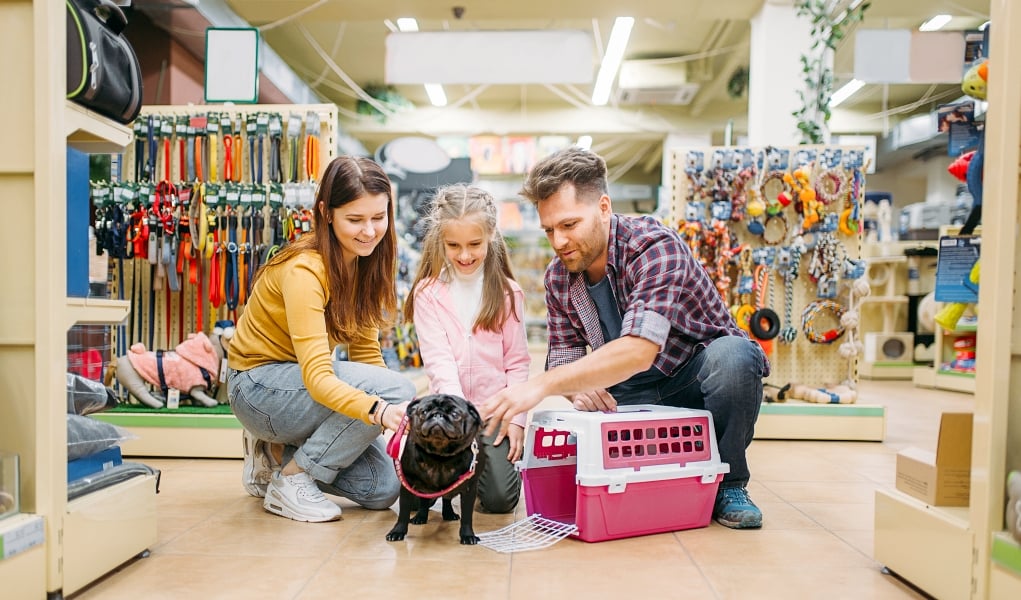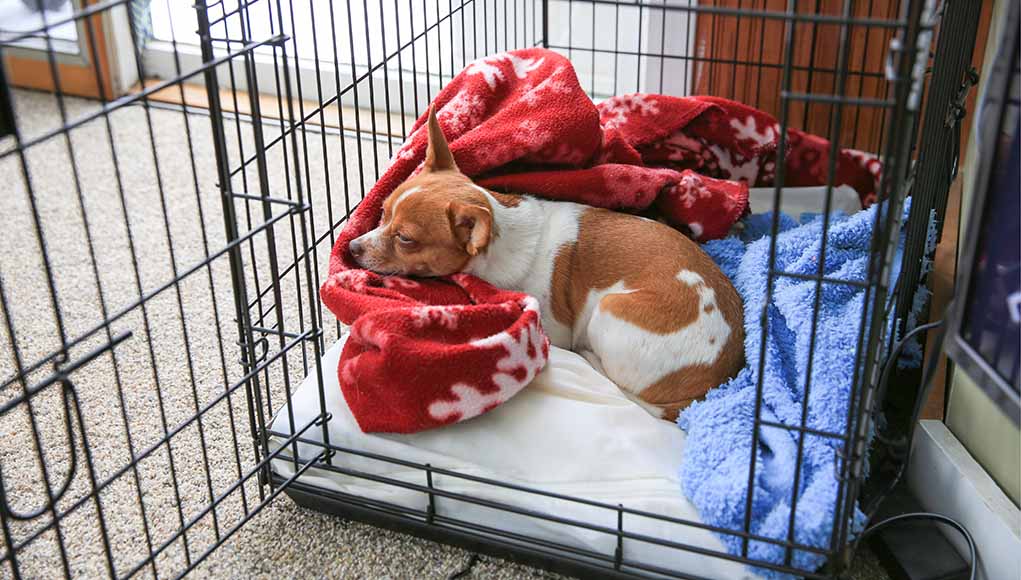Table of Contents
Welcoming a new puppy into your home is exciting but also overwhelming at the same time.
There is so much to prepare for. You'll need to puppy-proof your home, prepare your family members, and purchase a bunch of new supplies before Fido's arrival.
These must-have puppy products are essential for every new pup, so be sure to add them to your shopping list!
The pet population has been steadily growing over the past few years. In response, manufacturers have been releasing new pet products at an alarming rate.
There are so many options available, so how are new pet parents supposed to know what they actually need and which products are just designed to pamper a pooch?
Must-have puppy products help fill a need—food, exercise, safety, hygiene, etc… Products such as clothing, strollers, car seat covers, and water fountains are all nice to have but not essential to meet your puppy's basic needs.
When you first adopt a puppy, there will be a lot of expenses. You'll have the initial adoption fees, veterinary bills, and training costs.
It's important that you don't get caught up in buying every piece of dog supplies you find.
These must-have puppy products are affordable on most budgets, and it's imperative that you plan for these expenses.
10 Must-Have Puppy Products:
Easy shopping guide for expecting pet parents
1. Collar and Leash
Pick a collar that fits your new pup with two fingers width of space between his neck and the collar.
Any tighter and your puppy will be uncomfortable; any looser and your pet could slip loose. I made a video guide on how to fit a collar properly, in case you have questions.
Choose a leash that you can comfortably hold and use to control your puppy. Retractable leashes can be dangerous for young puppies who haven't completed leash training.
“Traffic leashes” that have a main handle as well as a handle closer to your dog’s collar so that you can maintain control in situations that demand it are the best option for young pups.
2. ID Tags
A collar with your pet's identification tag is the easiest, cheapest, and most simple way to increase the chance of finding your dog in case he or she ever gets lost.
According to some studies, 15-20% of pets that are lost are NEVER returned to their homes.
It's important for your puppy to wear a collar on a regular basis, even if he is micro-chipped.
Microchips definitely increase the chance of finding your dog, but not by as much as we'd like them to.
In order for your pet to be identified with a microchip, it would need to be taken somewhere with a chip reader.
For this reason, having both a collar and a microchip on your new pet would be even safer.
3. High-Quality Puppy Food
Dog food is a no-brainer, but make sure that you buy a bag of the same food your puppy has been eating before he comes home with you.
Even if you plan on switching your pup’s food later, it’s important to make this transition slowly to avoid stomach upset.
Do your research on the best puppy food brands and pick the right type for your puppy's breed, current age, activity levels, and other factors.
You should feed your new pet food specifically designed for puppies. These foods are made with higher protein, calcium, and other nutrients that their growing bodies need.
4. Your First Vet Visit
You need a vet not only to keep your puppy up to date on their vaccinations and annual exams but also in case your puppy gets himself into trouble.
A good veterinarian is one who's open-minded and patient, so it's best to find one even before you bring your new pet home.
Interview potential veterinarians to make sure that their views on pet care align with yours.
Get a feel for the vet's bedside manner. Get to know them and ask questions to help you decide whether or not this vet will be a good fit for you and your puppy.
ALSO: 7 Things Every Puppy Parent Should Know
5. A Crate
Crating is a somewhat controversial topic. However, trainers and vets agree that crates are very beneficial.
The concept behind dog crating is to provide a safe and secure den that your puppy can call their own.
It provides them a place they can retreat to when feeling overwhelmed, but it’s also a means of keeping your puppy safe when you aren’t home to watch him.
Choose a quality crate that your puppy can comfortably stand up in. You should pick a crate that is tall enough to accommodate your puppy when he is full-grown.
To ensure that the crate you choose provides a safe place for your puppy, however, you must pick a length that only allows your dog to turn around.
The best way to do this is to purchase a puppy crate that comes with a divider so that you can adjust the crate size to fit your pup as he grows.
No dog should be kept in a crate for an extended period; this is cruel and unfair.
Nevertheless, when used properly, a crate will keep your puppy out of trouble while you’re not home. It's one of the most helpful must-have puppy products on my list.
6. A Puppy Bed
There are a lot of dog beds to choose from, and the type of puppy bed you pick is up to you.
I personally recommend investing in a bed that is easily washable or that is waterproof so puppy accidents are easily cleaned.
You may also want to look into a chew-proof bed if you expect your dog to chew through his first one (which is very likely to happen). In general, it's best to invest in a high-quality, USA-made bed that will last years.
Cheap ones flatten within weeks/months and are not worth the money spent.
7. Grooming Supplies
You will undoubtedly want to bathe your puppy, so you need to invest in a puppy-safe shampoo.
Don’t use human shampoo because it will dry out your puppy’s skin and throw off the pH balance.
Additionally, some dog shampoos are better for puppies or adult dogs, so make sure to get the right type based on pH balance (here's a vet's guide on this).
Dog nail clippers are another must-have puppy product.
Even though your puppy won’t need his nails clipped right away, you will want to get him used to seeing and being touched by the clippers as soon as possible (even if you're not cutting anything).
A dog toothbrush and toothpaste is another necessity.
You will have to brush your dog’s teeth regularly, and the sooner you get your puppy used to having a toothbrush in his mouth, the better.
It's much more difficult to get your dog to agree to brush his teeth when he's older.
8. Dog First Aid Kit
Chances are that you won’t need a first aid kit when you first bring your puppy home, but you should always be prepared. In some instances, every minute will count.
You can build your own dog first aid kit by including essential items like:
- gauze
- cotton balls or rounds
- peroxide
- antibiotic ointment
- tweezers
There are also plenty of pre-assembled pet first aid kits available too.
9. Toys, Toys, and More Toys
Young puppies are dealing with teething, and chewing helps to soothe the pain.
Chewing on dog toys or dental puppy chews is a much better option than ruining your belongings.
Similarly, dogs like to practice their hunting instincts, and dog toys—especially the squeaky ones —represent prey.
Many pet owners will have a dog toy box prepared for their puppies, and their pups will actually walk to the box and pick the toy they wish to play with.
It's best to choose toys that are safe as well as fun. You should also include a variety of toys—plush, rubber, interactive, rope toys, etc…
This will ensure your puppy doesn't get bored and look for other ways to entertain himself.
10. Healthy Treats
It is important to have dog treats at home at all times.
You should even take them with you when you go somewhere with your pooch. This is especially true if you are still in the process of training your pup.
Dogs react and work much better with treats and positive reinforcement than anything else.
Use that to your advantage! If you choose not to use dog treats as reinforcement, then just having them on hand as a simple snack is essential, too.
READ NEXT: DIY Puppy Proofing – 7 Quick Tips To Puppy Proof Your Home














